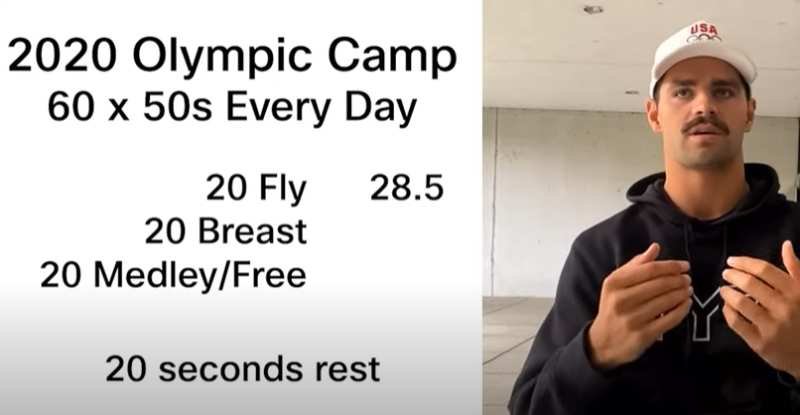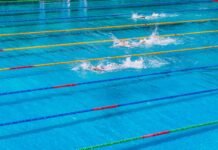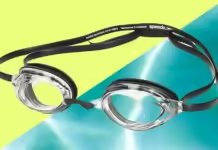Boost Your Speed and Endurance: 7 Interval Swim Workouts for All Levels
Unlock faster swimming with these seven interval training workouts designed for swimmers of all abilities. Whether you’re a beginner or training for the Olympics, interval swim training is key to improving your speed and stamina.
So, what is interval training for swimmers? It’s a workout technique that alternates between short bursts of intense swimming and periods of rest or active recovery.
Why is interval training my go-to method for swim workouts? Because while long, steady swims have their benefits, interval training offers a powerful mix of speed, enhanced technique, and cardiovascular benefits that often surpass traditional endurance swimming.
There are countless ways to structure an interval swim workout. Below, we’ve outlined a variety of interval training styles, complete with sample sets, to help you take your swim performance to the next level.
Let’s dive into these interval swim workouts and start swimming faster!
Types of Interval Training Workouts for Swimmers
The most common types of interval training swim workouts include:
- High-intensity interval training (HIIT)
- Sprint interval training
- Repeated-sprint training
- UItra short race pace training (USRPT)
- Tabata
- Fartlek training
- Long interval training
The features of each type of interval training are listed below.
We also include sample sets for each type of interval training swim workout to help you get started with this type of training at the pool.
1. High-Intensity Interval Training (HIIT) for Swimmers
High-Intensity Interval Training (HIIT) in the pool is one of the most effective ways to get a powerful swim workout. Research shows that HIIT improves VO2max, resting metabolic rate, and aerobic capacity (Atakan et al., 2021).
A study by Thum et al. (2017) also found that HIIT was significantly more enjoyable for participants compared to continuous training. In their paper titled “High-Intensity Interval Training Elicits Higher Enjoyment than Moderate Intensity Continuous Exercise,” subjects did eight rounds of HIIT on a bike (60 seconds of 85% effort, followed by 60 seconds of active recovery) or 20 minutes of continuous cycling. The HIIT group overwhelmingly reported greater enjoyment.
Designing a HIIT Set for Swimmers
Creating a HIIT workout for swimming is simple: alternate between 30-60 seconds of fast swimming and equal periods of active or complete rest. Here are some sample HIIT swim sets:
- 10×75m freestyle @ 1:30 (fast)
- 20×50m freestyle @ 1:10 (fast)
- 30×25m freestyle @ :40 (fast)
- 40×25m alternating fast and easy @ :30
- 20×50m alternating fast swim and easy kick @ 1:10
As you can see, there are countless ways to incorporate HIIT into your swim workouts. Just remember that for a swim workout to qualify as HIIT, you should aim for 85-90% effort during the fast intervals. This is not quite an all-out sprint but very close!
2. Sprint Interval Training (SIT)
Sprint Interval Training (SIT) is a more intense form of interval training that cranks the effort to the maximum, reduces the work duration, and extends the recovery time. The work intervals in SIT should be no longer than 30 seconds, with recovery periods around 4 minutes, allowing for active or complete rest.
Here’s a sample SIT swim workout:
- 4×50m freestyle ALL-OUT @ 4:00
(Recovery between sets can include light swimming for active recovery or complete rest.)
To qualify as Sprint Interval Training, you should be pushing for 100% maximal power, 85% max sprint speed, or 170% of VO2max (Gillen & Gibala, 2014). Although SIT sets are short in total distance, they demand maximum effort, so be sure to warm up thoroughly before diving in.
3. Repeated Sprint Training
Repeated sprint training (RST) is another type of interval training with a robust list of benefits for swimmers.
A meta-analysis that reviewed the benefits of RST published in the Journal of Sports Medicine (Taylor et al., 2015) showed that repeated-sprint training significantly improved speed, power, repeated sprint-ability, and even endurance.

Repeated sprint training alternates 10 seconds (or slightly less) of all-out swimming with relatively short rest periods of approximately 60 seconds. Compared to Sprint Interval Training, RST has a lot more reps.
The rest period is less than other types of all-out interval training strategies, which means there is inevitably going to be some performance decline within each round.
For swimmers who cannot swim the length of a pool all-out in 10s or less (so, 99% of us), swim fast for 10s of the length, whether that means 15m or 20m or 21m and then coast into the wall.
I’d also suggest configuring the sprints to be 10s of swimming, not including push-offs.
See also:Try This Advanced HIIT Swim Workout for Power and Speed in the Pool
Here are some example RST sets you can do in the pool:
- 3 rounds [6×25 freestyle swimming all-out @1:00 + 100 easy]
- 6 rounds [5×25 freestyle kick all-out @1:00 + 100 easy]
- 2 rounds [15x10m freestyle swim all-out @1:00 + 200 easy]
This type of training is excellent for building speed endurance in the water.
Do your best on those final reps of each set to keep your technique together.
4. USRPT
Ultra-short race pace training is a type of swim set that has exploded into the swimming consciousness in recent years.
A derivative of HIIT, and popularized by Olympic gold medalist Michael Andrew, USRPT consists of doing a ton of repetitions at race pace on short rest. Hence, the name.

The primary goal of USRPT is to train a ton of meters or yards at race pace, whether it’s 25s, 50s, or even 100s.
USRPT gives enough rest between repetitions to maintain race-worthy technique and the maximum intensity requires full engagement and focus.
(Like many topics in the swimming world, such as “is it a length or a lap?”, USRPT always elicits a hot debate. We’ll cover the full list of pros and cons of this training methodology in a future article.)
USRPT is a very strict form of interval training for swimmers because it requires that you hit your target pace.
If you miss pace on one rep, you sit out for a repetition. If you miss pace on two consecutive reps, or you miss three times total, the set is over.
The goal, in a sense, isn’t fully completing the set perfectly. If you can complete 30×25 at race pace and on short rest, the race pace should be quickened to encourage further adaptation.
Here are some example USRPT sets:
- 20x50m freestyle at 200m race pace – use an interval that gives you :20 rest
- 30×25 freestyle at 100m race pace – use an interval that gives you :15 to :20 rest
This type of swim training is brutal.
Michael Andrew, the fella who, along with his coach and father, Peter, brought this form of training to the swimming masses, does this training exhaustively.
At the American Olympic preparation camp, Andrew was doing workouts where he’d swim 60×50 race-pace [20 butterfly, 20 breaststroke, 20 medley or freestyle].

Ouchie.
This type of interval training requires you to keep a close eye on the clock and a lot of mental toughness.
5. Tabata
Tabata is a form of interval training that looks too good to be true.
The protocol is just four minutes long, with eight efforts of :20 seconds of work alternating with :10 of rest.
But when done properly, Tabata training is brutal.
Pioneered by Izumi Tabata, the Tabata training protocol can improve VO2 max with just four sessions per week, with four minutes of work per workout.
The original paper on Tabata, published in the Journal of Medicine and Science in Sports and Exercise in 1996 showed that this training protocol improved VO2max by a whopping 15% over just eight weeks of training.
I like that!
Here’s how to do Tabata training in the swimming pool:
- 8x [:20 all-out, maximum effort + :10 rest]
Configuring how to 20s of work may be challenging for swimmers who can easily cross the pool in less than 20s when going fast.
Some ideas to get the full 20s of all-out effort include:
- Add resistance to “slow down” your swimming so it takes 20-seconds to cross the pool. Using a swim parachute or DragSox, for example.
- Tethered swimming. If you are fortunate enough to have access to a Power Tower or Stretch Cordz (resistance tubing), use this type of resistance swimming to hit that 20s target.
- Do the 20s kick. A great way to improve leg endurance is to jump on the kickboard and do a Tabata protocol with just your legs to improve closing speed in your races and improve overall leg fitness.
But again, the key to this type of training is total effort.
The original paper showed that participants generated 170% of VO2max while working out, so drop the hammer when doing this type of training in the pool.
And as always, warm-up and warm-down thoroughly before unleashing all-out swimming in the pool.
6. Fartlek
Fartlek training is one of my favorite ways to spice up aerobic training in the pool and is a great interval option for endurance-minded swimmers.
Fartlek, besides being fun to say out loud, is a Swedish word for “speed play.”
Fartlek is a type of interval training where you do long stretches of swimming with random bursts of speed.

Research published in the European Journal of Applied Physiology showed that Fartlek training helped swimmers to significantly increase breathing capacity.
I love Fartlek training as it teaches you how to change gears in the pool, is mentally engaging, and it is low-pressure speed work.
Plus, it’s just more fun compared to steady-state swimming!
Here are a couple of ways that swimmers can introduce Fartlek training to their swim workouts:
- 1,000m freestyle swimming – last 15m of each 100m is FAST.
- 1,500m freestyle as 100m swim cruise, 25m kick fast
For swim coaches, a fun way to keep your swimmers on their toes is to issue a 20-minute freestyle swim.
Every minute or so blow the whistle to signal “FAST” and wait around 25-30 seconds before signaling a return to cruise speed.
Swimmers will be all over the pool, at different parts of the lap, and so they will have multiple opportunities to work different parts of the swim (turns, finish, breakouts, mid-lap swimming, and so on).
7. Long interval training
Long interval training involves longer, more sustained efforts and is a good option for cranking up quality yardage and building endurance for swimmers.
Long intervals are also a swim workout-splitting strategy that can improve workout performance, including increased overall velocity and better technique.
With long intervals, repetitions last several minutes and have less velocity than the supramaximal interval swim training described earlier.

One study, published in the Journal of Sports Medicine International, took a group of healthy runners and tested them on a non-motorized treadmill to compare long-interval training with Tabata.
The long interval training (4×4 minutes of 90-95% effort with several minutes of rest between reps) and the Tabata protocol produced identical outcomes in VO2max, heart rate, and lactate concentration.
The advantage of long interval training is that it’s done with less intensity, so it could be hypothesized that it’s a better-suited interval training protocol for swimmers who don’t enjoy all-out and supramaximal efforts.
Where long intervals really shine, however, is when we compare it to long, unbroken swimming. Long intervals in this scenario (1000m swimming straight vs 2x500m swimming) produce higher lactate concentrations and increase post-exercise oxygen consumption.
One study published in the Canadian Journal of Applied Physiology broke up 30-minute cycling workouts into 2x15m sets. Excess postexercise oxygen consumption (EPOC) was significantly higher in the long interval group (5.3 L vs 7.4 L)
There is also an argument to be made that because long intervals cover more yardage compared to other types of interval training, there are more opportunities for swimmers to learn how to maintain stroke technique under stress.
Anyway, here is what a long interval training swim workout would look like:
- 4x 300 swim fast with 3mins rest between reps.
- Taking a 1,500m swim and breaking it up into 5x300m or 3x500m
- Taking a 3,000m straight swim and breaking it up into 3x1000m or 6x500m.
Long intervals are an excellent alternative to long stretches of swimming as you will swim faster, swim with better technique, and, frankly, get less bored.
What is Interval Training in Swimming?
Interval training is a powerful method for swimmers to enhance performance by combining high-intensity efforts with periods of rest or active recovery. This training style involves short, intense bursts of effort at near, maximal, or even supra-maximal levels, followed by rest.
According to a meta-analysis from the International Journal of Environmental Research and Public Health, interval swim training typically includes:
- Efforts at 90% or higher of VO2max
- 75% or higher of maximal power
- Supra-maximal intensity levels
These high-effort intervals are then balanced with complete rest (e.g., resting on the lane rope) or active rest (such as slow swimming).
Benefits of Interval Training for Swimmers
Incorporating interval swim workouts can be a game-changer for swimmers of all levels. This training method helps boost endurance, increase speed, and keep your workouts engaging.
Whether you’re a beginner getting started with lap swimming or an elite athlete aiming for the podium, interval training provides customizable workouts to match your goals.
So dive in, try these interval swim sets, and elevate your swimming speed and endurance to new heights!
See also: The Best Swimming Goggles for Women


















